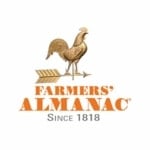How to Grow Sweet Corn
Nothing says summer like eating fresh corn on the cob. And you can grow it even if you're limited on space. Here's how to get started.

Nothing defines the height of summer like eating fresh corn on the cob. A small plot of land can reap a bountiful harvest of sweet corn, and there are even some varieties bred specifically to be grown in containers for those short on space.
How To Plant Sweet Corn
Start: Plant seeds directly outdoors, 2 weeks after your last frost. Plant in rows 2-3′ apart. Space seeds 5-6″ apart and cover with 1” of soil. When seedlings are 3-5” tall and healthy, thin to stand 1’ apart.
Water: Corn grows fast and needs plenty of water, 1-2” inches per week. During dry times, one or two deep soakings per week is more effective than several lighter waterings.
Soil: Corn prefers a well-drained, sandy loam. pH 5.8-6.8
Light: Full sun.
Fertilize: Corn is a heavy feeder and needs ample fertilization. Using compost or an all-purpose fertilizer at planting will get the corn off to a good start, but the corn will soon deplete the nutrients in the soil. Side dress the plants with a nitrogen-rich fertilizer when the plants have about ten leaves each and again when silk first appears on the cobs.
Harvest: Ears are ready to harvest about 20 days after the silks emerge. Pierce a kernel to check for ripeness. The juice should be milky. Watery juice means the corn is not yet ripe; creamy juice is overripe and won’t be as sweet. Firmly grip the ear and twist downward to harvest. Be careful not to damage the stalk as that may result in the second ear not developing.
Notes: Make sure to devote a large enough space for your corn patch, at least 10’ by 10’, as corn is wind-pollinated. And get the seeds started as soon as possible.
Helpful Corn Growing Links
Farmer’s Almanac Gardening By the Moon Calendar
Companion Planting: 10 Veggies That Should Grow Together
Corn Recipes, Tips & Folklore
Delicious and Different Corn on the Cob Recipes
Cooking Vegetables: When Should You Boil The Water?
Weather Lore: Knee-High by the Fourth of July
This article was published by the Staff at FarmersAlmanac.com. Any questions? Contact us at [email protected].







When do I plant in Imperial county,Ca winter crops what types in my planters?
When do I plant winter corn and winter crops in Imperial county,Ca
When do I plant sweet winter corn ?
Is May 2 a good time to plant sweet corn?
I want to make sure the ear worms don’t eat my corn, what can I use to keep this pest out of my ears of corn?
Sevin dust when you see the silk